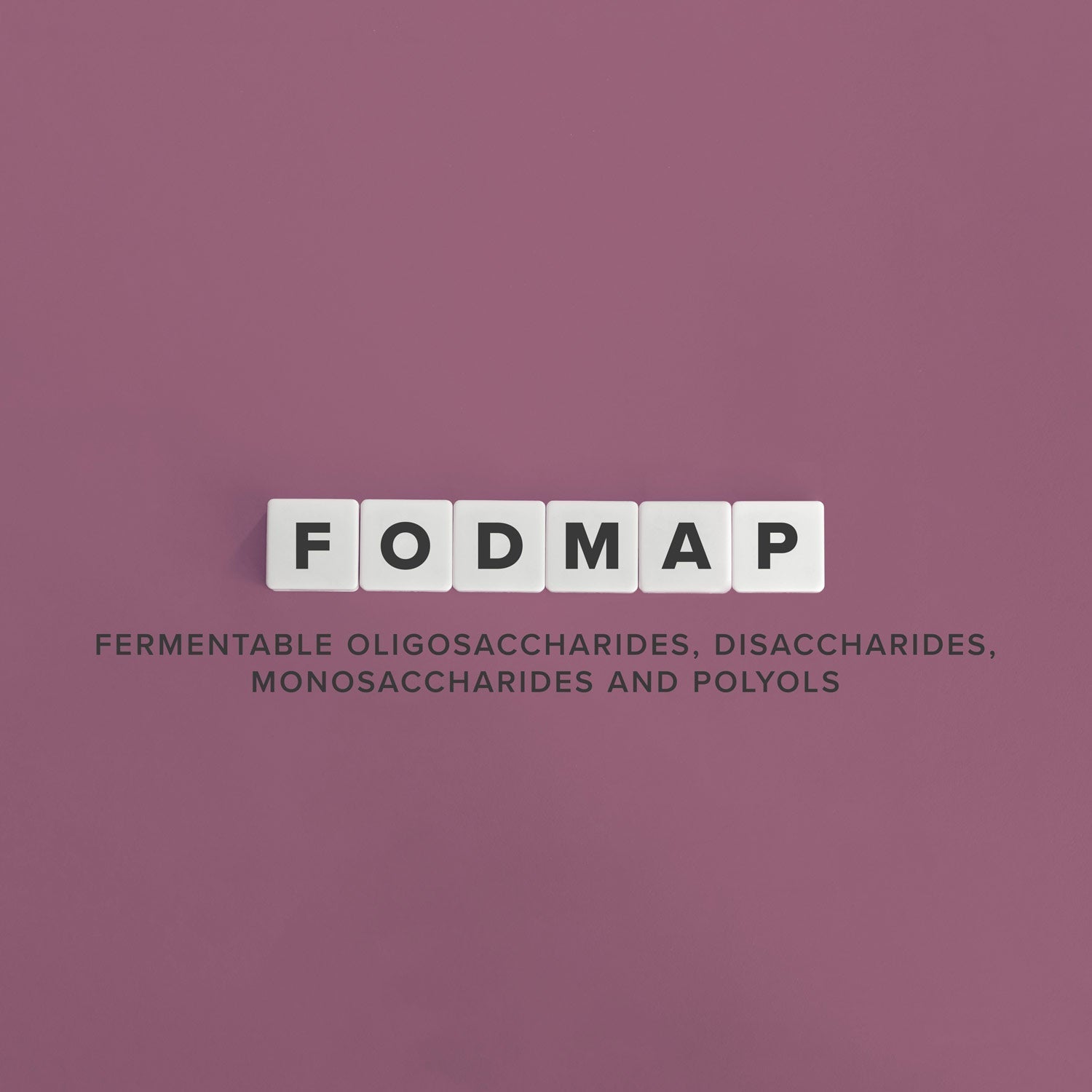
Fodmap, interesting in the context of irritable bowel syndrome?
What is the FODMAP diet?
Everyone's talking about it, from health magazines to specialist medical journals. The FODMAP diet, or low-FODMAP diet, is currently experiencing a surge in popularity. It is particularly recognized for its positive benefits in helping people with irritable bowel syndrome (IBS).
Biocyte takes stock of the subject, so that you can form your own opinion on this diet, who it is for, how to start it, etc.
To begin with a definition of FODMAP.
FODMAPs are a food group thought to contribute to the symptoms of irritable bowel syndrome and similar gastrointestinal disorders. The culprit? Poorly absorbed, fermentable sugars found in many foods, especially fruits and vegetables.
Are you ready?
Definition of FODMAP
F - Fermentable: fermentation process, when intestinal bacteria consume sugars
O - Oligosaccharides: Fructosans (FOS) and GOS are present in wheat, garlic, onion and various vegetables.
D - Disaccharides: lactose which is present in dairy products such as milk and fresh cheeses.
M - Monosaccharides: fructose, present in honey, fruits and certain sweet products
A - And
P - Polyols: Mannitol and sorbitol are present in certain fruits and vegetables.
FODMAPs are primarily carbohydrates that are difficult for the small intestine to absorb and therefore difficult to digest. We've listed a variety of foods in this article, but we recommend consulting your doctor or dietitian before starting any diet.
How were Fodmaps discovered?
In early 2000, Susan Shepherd and other researchers at Monash University in Australia launched several studies on patients suffering from irritable bowel syndrome. The aim of the study was to investigate whether reducing one type of sugar, several types of sugars, or all sugars in the diet could provide relief to patients suffering from irritable bowel syndrome.
Why use a Low FODMAP diet?
The FODMAP diet is one of the most restrictive diets and can cause nutritional deficiencies if followed for too long.
This is why we recommend that you consult your doctor or nutritionist or dietitian before starting this diet.
Indeed, a “Low FODMAP” diet for more than a few weeks could trigger food intolerances to certain foods.
This is why this diet is primarily recommended for people suffering from irritable bowel syndrome, to help them identify which FODMAP sugars are responsible for their ailments and reduce the amount they consume. But in no case should they be excluded from their diet.
A FODMAP diet therefore makes it possible to identify foods that are poorly accepted by our small intestine.
The pattern is as follows: a person eats foods rich in FODMAPS, their digestive system (small intestine and large intestine) cannot assimilate them properly, which triggers stomach aches. These aches come from the fact that the body will help the small intestine to digest properly by releasing water to eliminate. The bacteria present in the large intestine will then consume the poorly digested sugars, which will cause fermentation that will cause bloating, stomach aches and gas.
Symptoms caused by FODMAPs
Among the various symptoms caused by FODMAPs, the two main ones are constipation and bloating.
Whatever name you know it by: irritable bowel syndrome, functional colopathy or functional intestinal disorders, irritable bowel syndrome is benign, but constitutes a chronic disorder that is bothersome in the daily life of those who suffer from it. It is twice as common in women as in men, it mainly affects 20-40 year olds and anxious people subjected to persistent stress seem to be more at risk than others, focus on IRR
If you suffer from these ailments, you may want to consult a specialist for testing. Once you have completed your diet, you can use supplements to meet your nutritional needs for irritable bowel syndrome.
How to identify FODMAP-free foods?
Since the indication is not mentioned on the food label, we advise you to contact a doctor, dietician, or nutritionist so that they can provide you with a comprehensive list of items to limit or even avoid;
It will also ensure that you maintain a balanced diet by replacing the high FODMAP foods you usually eat with lower-impact foods rather than eliminating entire food categories.
For example, if you usually eat pears and mango, he or she will advise you to replace it with low FODMAP fruits.
Instead of brown rice, you can opt for white rice or quinoa, two low-FODMAP grains.
FODMAPs are found in foods such as:
1. Cereals: wheat and some of its derivatives, barley, rye, brown rice, oats, bulgur, wholemeal bread
2. Certain vegetables: garlic, Jerusalem artichoke, artichoke, asparagus, mushrooms, dried vegetables: red beans, chickpeas, flageolets
3. Lactose: contained in greater or lesser quantities in dairy products: milk, unripened fresh cheese, cottage cheese, fresh cheese, yogurt, etc.
4. Fruits: In pear, apple, mango, cherries, watermelon, asparagus,
5. Processed products: refined white sugar, chewing gum, packets of cakes, industrial cereals.
List of foods high in FODMAP and low in FODMAP
Here are some foods that are very high in FODMAPs:
Honey, garlic, peas, mushrooms, onions, apple, cherry, peach, pear, cow's milk, yogurt, wheat, rye, barley.
Examples of low FODMAP foods:
Carrot, hard cheese, tofu, eggs, cucumber, lettuce, grapes, oranges, pineapple, hard cheese, potatoes, meat, chicken, fish, corn, oats and rice.
Which vegetables are low in FODMAPs?
Many vegetables are low in FODMAP: we can cite vegetables such as cucumber, carrots, salads, green beans, zucchini, celery, peppers (red only), endives, radishes, spinach shoots, etc.
Which fruits are low in FODMAP?
Banana, pineapple, lemon, clementine, strawberry, kiwi, mandarins, chestnuts, oranges, grapes and prickly pears...
Which cereals are low in FODMAPs?
Corn starch, corn flour, potato flour, rice flour, oat flakes, millet, rice pasta, gluten-free bread (artisanal), quinoa, buckwheat
Which dairy products are low in FODMAPs?
All types of butter, cheeses such as Camembert, Emmental, feta, vegetable milks, almond milk, coconut milk, rice milk, lactose-free milk, mozzarella, parmesan.
Which sugars are low in FODMAP?
Low Fodmap sugars and sweeteners include: wheat dextrose, corn dextrose, glucose, saccharin, sugar syrup, maple syrup, stevia, sucralose, cane and brown sugars, and also aspartame.





